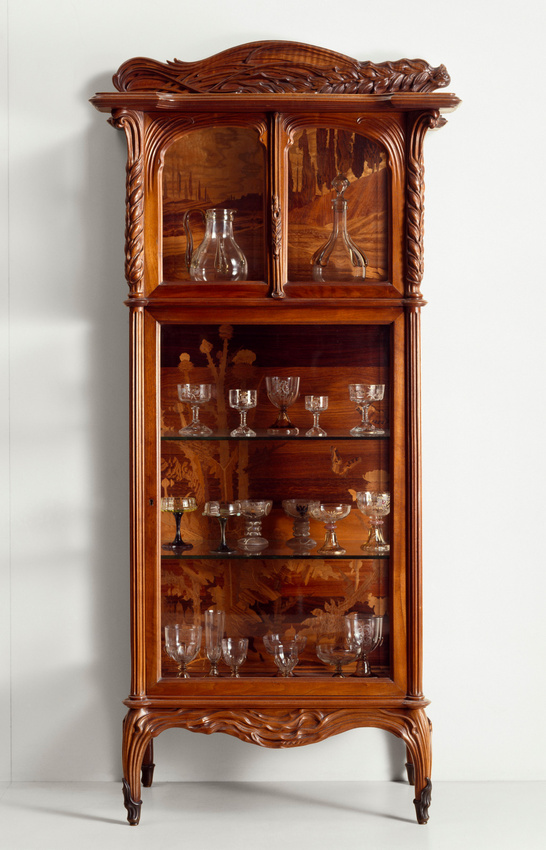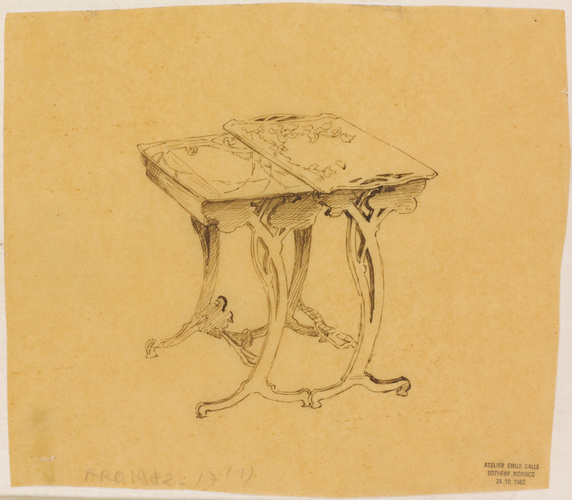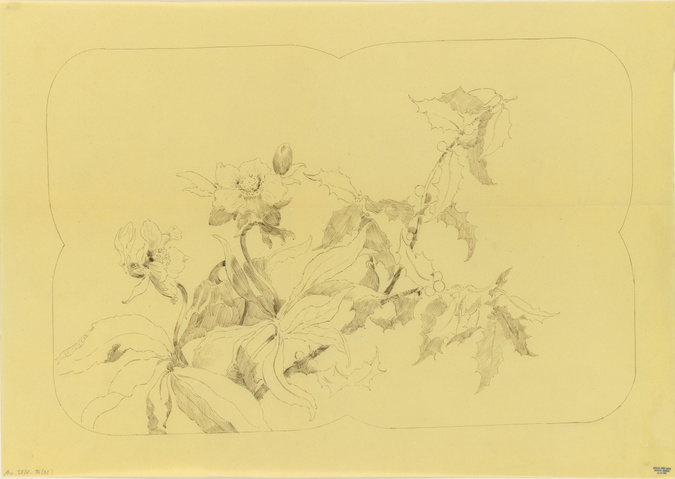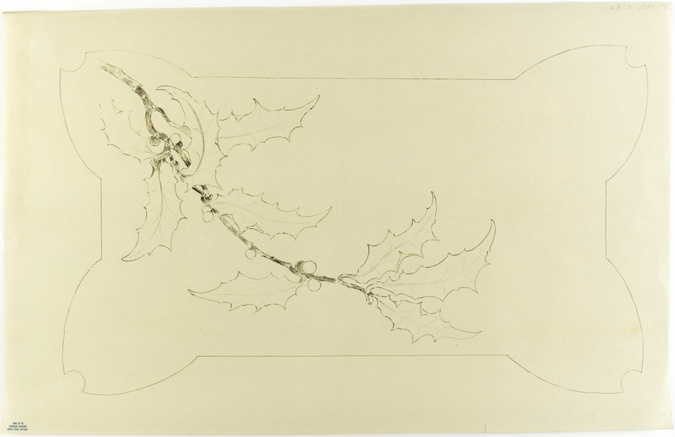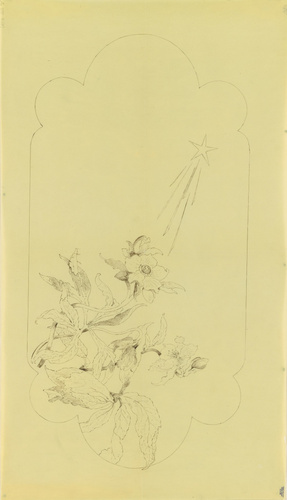Vitrine de salon
During the years 1900-1902, Emile Gallé mainly exploited the theme of aromatic herbs in his creations. From 1902, he concentrated his research on the study of cereals to use in his cabinet making. This resulted in 1903 with his presentation at the Salon of the Société Nationale des Beaux-Arts of a large dining room suite whose sideboard, bread box and table have ribs, mouldings and bronzes inspired by corn and barley.
This china cabinet follows the same theme. The ribs and the frame are inspired by barley, while the patinated bronze sheaths on the legs resemble ligules (tongue-shaped outgrowths at the junction of leaf and stalk). On the pediment there is an enormous, carved ear of corn, whose grassy spikes seem to be waving in the wind. The marquetry, representing a country landscape and a bunch of thistles, is a further symbol of fertility.
Two other models of this cabinet are known to exist (Danish Royal Collections and Virginia Museum of Fine Arts, Richmond), but the provenance of this one is particularly moving as it formed part of the furniture Gallé gave to his eldest daughter, Thérèse, as a wedding gift on 4 April 1902. The furniture was not delivered to the young couple's Marseille home until the autumn of 1903, but on 1 December 1903 Thérèse was still able to write to her father, saying: "We are both very busy and so we enjoy even more our moments of rest spent admiring our pieces of furniture, turning them around, re-positioning them, looking at them from every angle, in different lights, and discussing them. The more we look at them, the more they delight us! We are always discovering something new and beautiful in them" (private archives).
